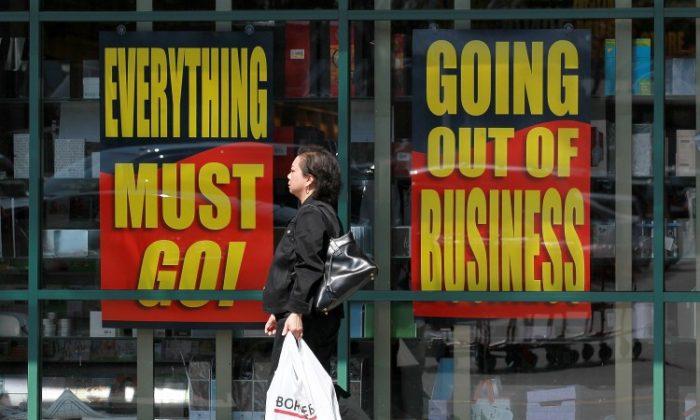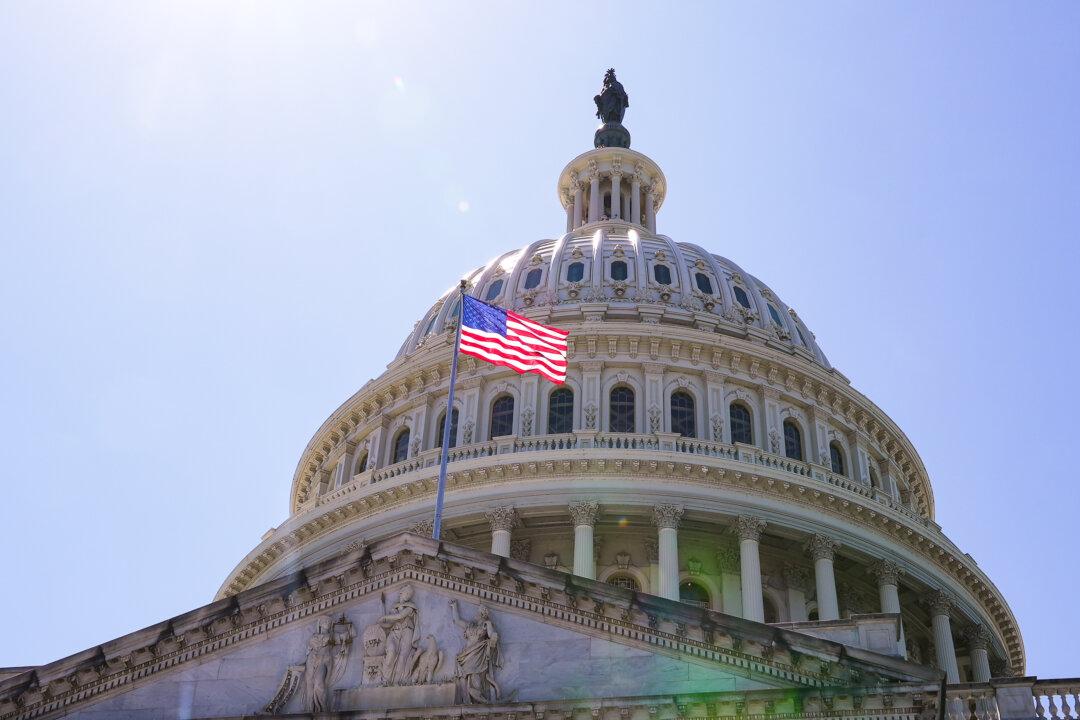The U.S. commercial real estate (CRE) market may crash soon and cause a ripple effect that could lead to a downturn as significant as the 2008 crisis, according to a prominent real estate investment executive.
Speaking in an interview last week, Patrick Carroll, CEO of the real estate investment firm Carroll, told CNBC that the market would likely turn sour in the coming years as large amounts of commercial mortgage debt hit maturity.
“It’s going to be ugly. It’s going to be at least as bad as ‘08, ’09.”
In 2008 and 2009, economic recessions sparked a bevy of federal bailouts.
A report from Reuters dated April 14 states that several of the largest U.S. banks have warned that an area of growing concern is office commercial real estate as property values fall and more borrowers default on their loans amid increasing interest rates, relatively high inflation, and a slowing economy.
Executives at Wells Fargo, Citigroup, and JPMorgan Chase told Reuters and others that the sector’s conditions were worsening.
“Weakness continues to develop in commercial real estate office,” Wells Fargo CEO Charlie Scharf said on a call with analysts, Reuters reported.
In contrast, Scharf said the bank set aside an additional $643 million in the first quarter for credit losses, mainly driven by expectations of higher commercial real estate loan losses.
JPMorgan CEO Jamie Dimon said he expected tighter lending conditions, most of it around “certain real estate things,” and that “increases the odds of a recession.” Meanwhile, Wells Fargo Chief Financial Officer Mike Santomassimo said the office market is now showing “signs of weakness due to lower demand, higher financing costs, and challenging capital market conditions,” according to the report.
“While we haven’t seen this translate to meaningful loss content yet, we expect to see more stress over time,” Santomassimo said.

According to Citigroup analysts, banks represent 54 percent of the overall $5.7 trillion commercial real estate market, with the small lenders holding 70 percent of commercial real estate loans. More than $1.4 trillion in U.S. CRE loans will mature by 2027, with some $270 billion coming due this year, according to Reuters and real estate data provider Trepp.
Loans backed by offices make up the most significant share of the maturing debt load, followed by multifamily and retail properties. The question now facing many borrowers is whether they can refinance or restructure loans to avoid default, bankers and analysts said. Older properties with high vacancies face the greatest refinancing challenge, they said, according to the media outlet.
The Reuters article, citing bank CEOs and analysts, noted that the debt held by banks would have to be refinanced in tougher conditions because of higher interest rates and tightening credit availability.
“Sellers are not realizing how much their properties have lost value, and they’re not willing to dump their properties yet because they haven’t felt enough pain. They’re about to start feeling pain. These lenders are screwed,” Carroll said in the CNBC interview, noting that $1.5 trillion in commercial real estate debt will be due within three years or so. That debt needs to be renegotiated or refinanced, he said.
Also, bankers and analysts told Reuters that the most significant stress in the office sector is likely to be felt in large cities such as San Francisco, Los Angeles, New York, and Seattle. Cities in the southern United States have a lower share of risky loans, according to Stephen Buschbom, research director at Trepp.
“The regions with the highest level of office stress are located in the Northeast and tech-heavy West Coast,” he told Reuters.
The Federal Reserve Bank of New York echoed Buschbom’s sentiments last week in a post on its website.
“While the residential rental market has bounced back, the retail and office markets have remained slack—largely due to the shift to remote work and online shopping,” the New York Fed stated on April 13.
It noted that commercial rents in Manhattan are down significantly from their pre-COVID-19 levels.





